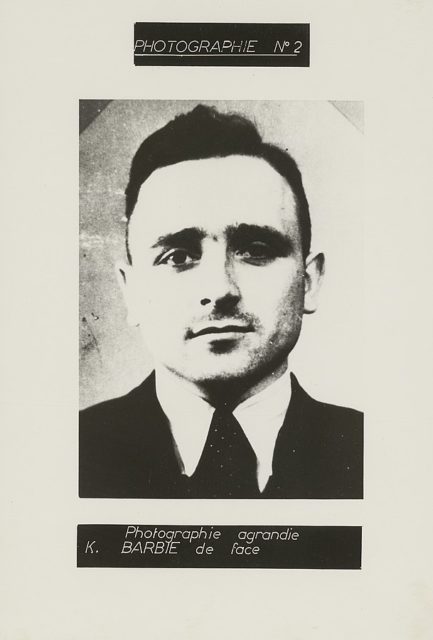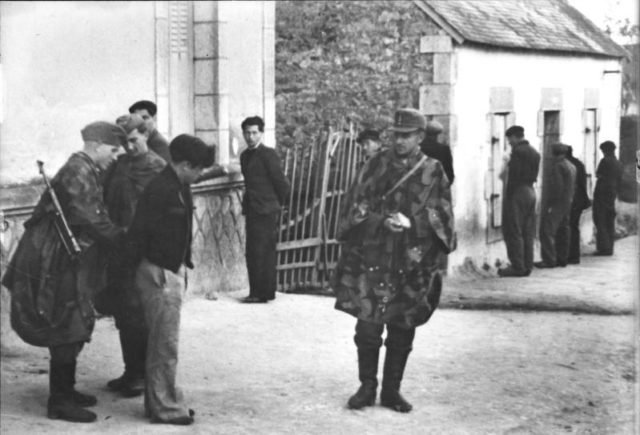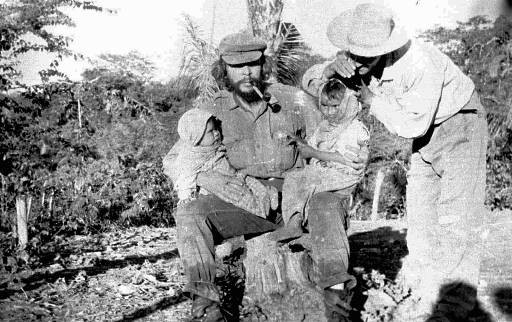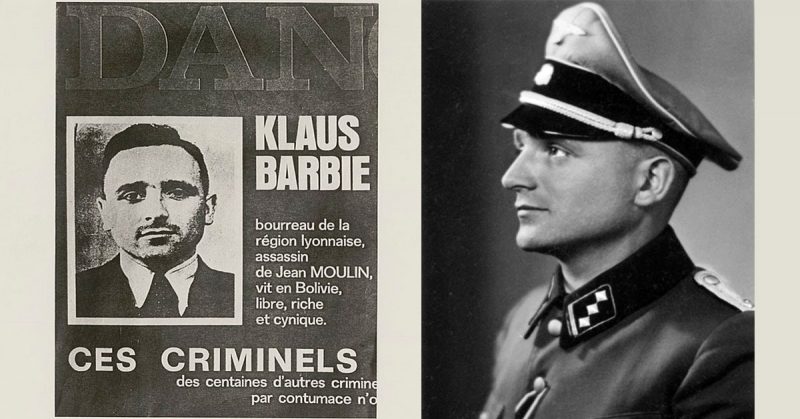One of the most notorious figures in the Nazi hierarchy and one who attracted almost as much attention as Adolf Eichmann in the post-war period was Klaus Barbie, the “Butcher of Lyon.”
Born on October 25, 1913, Klaus (born Nikolaus Barbie) grew up in Godesburg, today a part of Bonn. His father returned from WWI a disillusioned abusive alcoholic with a hatred of the French. At age 10 Barbie was sent to boarding school where he was grateful to be away from his violent father. He had shown an interest in theology from an early age and was planning to study it, but his father died in 1933. Unemployed, he was conscripted into the Nazi Labour Service, the Reichsarbeitsdienst. Hitler had just seized power, and Germany was in turmoil.
In 1935 Barbie joined the SS working in the Sicherheitsdienst (SD), the sister organization of the infamous Gestapo.
Although he was active in the ranks of the SD, it was not until 1937 that Barbie officially became a Party member. After the swift advance through Western Europe by Hitler’s troops, Klaus was posted to Amsterdam. As a Gestapo Officer, his duty was to locate and apprehend hiding Jews and members of the resistance.
He soon became known for his cruelty, but it was nothing compared to what would come when he was posted to France. The name Barbie is of French origin, from Barbier, but his hatred for the French, instilled in him by his father, led him to despise France and all it stood for.

In 1942 Barbie was sent to Dijon, in eastern France and then later that year he was transferred to Lyon, where he established his headquarters at the Hôtel Terminus. The hotel became synonymous with death and torture. What distinguished the 29-year-old Gestapo officer was the fact that he personally conducted interrogations and tortured his victims, rather than employing his henchmen. He preferred using electric shocks on his detainees but was also prone to using sexual abuse. His perverted and depraved mind knew no bounds.
One of the more horrific stories involving Klaus Barbie and his torture techniques was told by the daughter of a French Resistance leader who had the misfortune of being captured by the Gestapo. She said Barbie had beaten and then skinned her father alive before immersing his head in a bucket of ammonia.
It has been determined by historians that 14,000 people died at the hands of the Butcher of Lyon. His most valuable catch was Jean Moulin, a hero and prominent figure of the French Resistance. Moulin was arrested, tortured and murdered by Barbie, for which he received the Iron Cross First Class from Hitler himself.
In 1944 Barbie was responsible for the deportation to Auschwitz of 44 Jewish children who had sought refuge in an orphanage in a village near Lyon. In September, that year, when the Allied victory in France was imminent, in Rehaupal, he participated in exterminating resistance members and civilians alike.

After the war, in 1947, the fanatical Nazi was recruited by the CIC, in one of America’s controversial operations of employing former SS members for anti-Communist work across Europe. He was assigned to monitoring the French intelligence service in the French zone of occupied Germany, as the Americans believed that their allies were infiltrated by communists.
Naturally, the French, who had sentenced Barbie to death in absentia, were infuriated when they discovered who he was and requested the immediate apprehension of the war criminal. Instead, allegedly, the US helped Barbie to escape to Bolivia, where he became Klaus Altmann and was employed by government officials in arms trading operations. The Americans probably refused to hand Barbie over to the French authorities to avoid admitting they had employed him in the first place.
In 1965 Barbie had spent time working for the newly established BND, the West German Foreign Intelligence Service under the code name Adler. Evidence exists of him receiving a monthly salary of 500 Deutsche Marks from the BND and making at least 35 reports to their headquarters.
Barbie was implicated as one of the key figures in the capture and execution of Ernesto Che Guevara, the famous Argentinian revolutionary, who was imprisoned and murdered in Bolivia in 1967.

In 1971, Klaus Barbie was located in Peru, by a group of French Nazi hunters under the leadership of Serge Klarsfeld. The information of his whereabouts was published in the French newspaper L’Aurore, along with a photograph which produced a world outcry for his arrest. He returned to Bolivia, where the dictator Hugo Banzer firmly refused to extradite him to France stating there was no such agreement between the two countries. In 1983 the newly elected democratic government finally extradited him to France.
The trial was filmed, much like the Eichmann trial in Israel, for it was deemed to have historical value. Barbie continuously refused to confess to his crimes, although 730 witnesses were gathered to prove his guilt.
After a long and tiresome trial, Klaus Barbie was sentenced to life imprisonment in 1987. The Butcher of Lyon was sent to a prison in Lyon, as part of his punishment. In 1991 he died behind bars, from consequences of leukemia and spine and prostate cancer.
